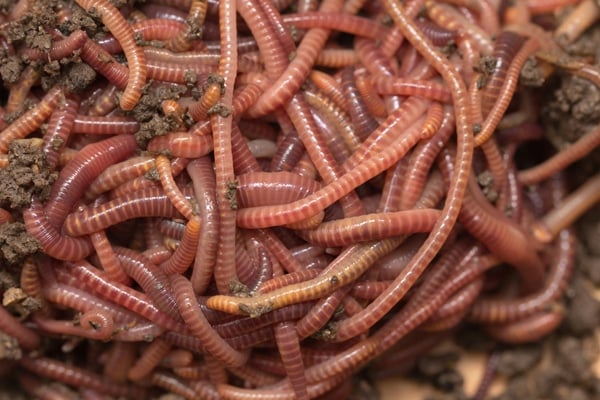The Secret to Lush Lawns Starts with Red Wiggler Express Yard Care Solutions
The Secret to Lush Lawns Starts with Red Wiggler Express Yard Care Solutions
Blog Article
Red Wigglers: The Unsung Heroes of Organic Waste Recycling
Red wigglers, or Eisenia fetida, work as important representatives in the organic waste reusing procedure, transforming discarded products into important vermicompost. Their effective breakdown of raw material not only enhances soil high quality yet likewise adds to sustainable waste administration techniques. As the globe progressively seeks options to deal with waste buildup and enhance farming productivity, understanding the role of these worms comes to be necessary. What systems allow them to grow in compost environments, and exactly how can they be properly utilized in both property and industrial setups? Exploring these questions exposes the broader effects of vermicomposting in our environmental landscape.
What Are Red Wigglers?
The impressive resilience of red wigglers, medically called Eisenia fetida, underscores their crucial role in organic waste recycling. These tiny, reddish-brown earthworms are generally discovered in breaking down raw material, such as compost heaps and manure lots. Lake Hickory Bait. Unlike various other earthworm species, red wigglers prosper in nutrient-rich atmospheres and are highly effective at damaging down natural materials, making them vital for vermicomposting

(Red Wiggler Express)Along with their function in waste reduction, red wigglers contribute to soil health and wellness by enhancing dirt structure and oygenation through their delving activities (Lake Hickory Bait). Their existence in composting systems not only improves decay rates however additionally advertises a lasting technique to squander administration, showing their significance in ecological conservation efforts
Advantages of Composting With Worms
Composting with worms, specifically red wigglers, supplies many advantages that improve both waste management and dirt wellness. Initially, these worms effectively break down natural waste, converting it right into nutrient-rich vermicompost that improves dirt. This process increases decay, permitting a much faster recycling of cooking area scraps and various other organic products compared to conventional composting methods.
Additionally, the vermicompost generated by red wigglers is teeming with helpful bacteria, which help boost dirt framework, oygenation, and dampness retention. This enhances the total health and wellness of plants, advertising energetic development and boosted yields in gardens and farming settings. The usage of worms in composting minimizes the manufacturing of greenhouse gases, such as methane, contributing to an extra sustainable waste monitoring system.

Exactly How to Start Vermicomposting
Developing a vermicomposting system is an uncomplicated process that can yield considerable benefits for both waste monitoring and dirt enrichment. To start, select an appropriate container, such as a plastic bin or wooden box, with adequate ventilation holes to make sure correct airflow. The dimensions must preferably be about 2 feet by 3 feet, enabling enough room for the worms to thrive.
Next, prepare bedding material, which can contain shredded newspaper, cardboard, or coconut coir. This bed linen must be dampened to produce an appropriate environment for the worms. Once the bed linen is in place, introduce red wigglers (Eisenia fetida) into the bin, normally around one extra pound of worms for each square foot of surface.
Complying with the positioning of worms, include organic waste, such as fruit and vegetable scraps, coffee premises, and smashed eggshells. With these actions, you will properly launch a vermicomposting system that contributes to sustainable waste administration and enriches your dirt.
Maintaining a Healthy And Balanced Worm Bin
(Red Wiggler Express)Maintaining a worm container prospering calls for normal interest and treatment to make certain the wellness of the red wigglers and the efficiency of the composting process. Appropriate maintenance begins with keeping track of the dampness levels; the Lake Rhodhiss Bait container needs to be moist however not saturated. An excellent guideline is to preserve a consistency comparable to a wrung-out sponge.
Aeration is critical. Gently blending the bedding and food scraps every couple of weeks avoids compaction and makes sure that all worms have accessibility to oxygen. Additionally, it is necessary to feed the worms suitably. A well balanced diet of vegetables and fruit scraps, coffee grounds, and smashed eggshells ought to be used in moderation to stay clear of overfeeding, which can cause smells and parasites.
Temperature law is an additional crucial facet. Red wigglers thrive in a variety of 55 to 77 degrees Fahrenheit. If the bin ends up being too warm or chilly, the worms may end up being worried - Lake Hickory Bait. Finally, regularly look for signs of health and wellness, such as worm populace growth and the existence of healthy spreadings. By faithfully taking care of these variables, one can preserve a robust and efficient worm bin.
Effect On Sustainable Living
The effective maintenance of a worm bin not just benefits the health of red wigglers yet also contributes significantly to lasting living techniques. By reusing natural waste, such as cooking area scraps and lawn particles, red wigglers assist draw away considerable amounts of material from garbage dumps. This reduction in waste not just reduces greenhouse gas emissions however likewise reduces the ecological concern related to waste administration.
Additionally, the castings produced by red wigglers work as a nutrient-rich natural plant food, improving dirt health and promoting plant development. This all-natural choice to chemical fertilizers supports sustainable farming and gardening techniques, reducing reliance on synthetic inputs that can damage communities. Furthermore, worm composting promotes understanding of waste management, motivating people and communities to embrace more sustainable habits.

Final Thought
In summary, red wigglers serve as important factors to organic waste reusing via their reliable decay of organic materials. By integrating vermicomposting into waste monitoring approaches, people and neighborhoods can significantly minimize waste while promoting environmental sustainability.
Report this page